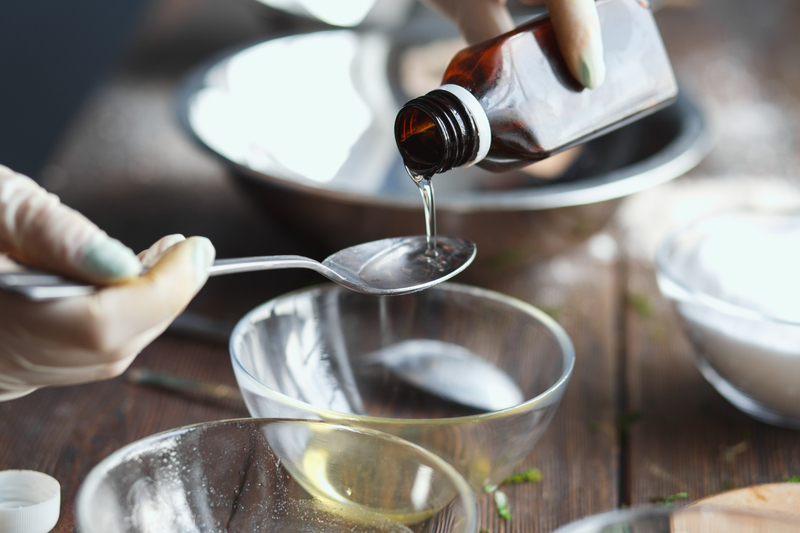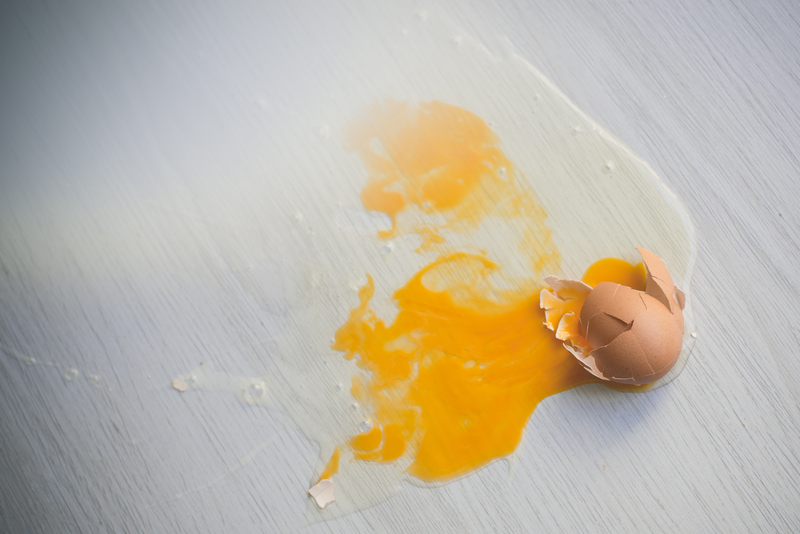Comprehensive Guide to Removing Grease Stains
Posted on 12/04/2025
Grease stains are a common yet frustrating problem in households and workplaces. They can mar the appearance of fabrics, appliances, and various surfaces if not treated properly. This comprehensive guide aims to provide you with effective techniques and tips to remove grease stains from different types of materials.
Understanding Grease Stains
Before diving into the removal methods, it is essential to understand what constitutes grease stains. Grease typically comes from animal fats, vegetable oils, motor oils, or lubricants. These substances are hydrophobic, meaning they repel water, thus making them challenging to clean with conventional water-based cleaning methods.

Essential Tools and Materials
To successfully remove grease stains, you will need some basic tools and materials:
1. Absorbent materials: Paper towels, cornstarch, baby powder, or baking soda.
2. Cleaning agents: Dish soap, vinegar, rubbing alcohol, or commercial stain removers.
3. Soft brushes or sponges: For scrubbing the stained area gently.
4. Clean cloths or towels: For blotting and drying the cleaned area.
Removing Grease Stains from Fabrics
Fabrics are particularly susceptible to grease stains. Here's a step-by-step guide to remove them:
Step 1: Blot the Stain
As soon as you notice the grease stain, blot it with a paper towel or cloth. Avoid rubbing as this can push the grease deeper into the fibers.
Step 2: Apply Absorbent Material
Sprinkle cornstarch or baking soda over the stain to absorb excess grease. Let it sit for 10-15 minutes before brushing it off.
Step 3: Pre-Treat the Stain
Apply a small amount of dish soap directly onto the stain. Gently scrub with a soft brush or sponge. Dish soap is effective because it is designed to break down grease.
Step 4: Rinse and Launder
Rinse the treated area with hot water (if the fabric allows) and launder as usual. Check the stain before drying; if it persists, repeat the previous steps.
Removing Grease Stains from Upholstery and Carpets
Upholstery and carpets are prone to grease stains, especially in dining and living areas. Follow these steps to tackle such stains:
Step 1: Blot the Stain
Blot the stain using a clean cloth or paper towel without rubbing.
Step 2: Apply Absorbent Material
Sprinkle cornstarch or baking soda over the stain. Leave it for at least 15 minutes, then vacuum the area.
Step 3: Use a Cleaning Solution
Mix a solution of warm water and a few drops of dish soap. Dip a cloth into the solution and dab it onto the stain. Blot the area with a clean, dry cloth to remove excess moisture.
Step 4: Rinse and Dry
Rinse the cleaned area with a damp cloth and blot again with a dry cloth. Allow the carpet or upholstery to air dry.
Removing Grease Stains from Hard Surfaces
Hard surfaces such as kitchen countertops, floors, and appliances can also accumulate grease. Here's how to clean them:
Step 1: Wipe the Surface
Wipe off any excess grease with a paper towel or cloth.
Step 2: Apply a Cleaning Solution
Use a mix of warm water and dish soap or a commercial degreaser. Apply the solution to the stained area and let it sit for a few minutes.
Step 3: Scrub and Rinse
Scrub the area with a sponge or soft brush. Rinse with clean water and wipe dry with a cloth.
Removing Grease Stains from Metal and Wood
Grease stains on metal and wood surfaces require specific approaches to avoid damage:
Step 1: Blot the Grease
Use a paper towel to blot off excess grease.
Step 2: Clean with Vinegar Solution
Mix equal parts of vinegar and water. Apply this solution to a cloth and wipe the stained area. Vinegar is effective in breaking down grease and is safe for most metal and wood surfaces.
Step 3: Wipe Dry
Wipe the area with a dry cloth to remove any remaining moisture.
Commercial Grease Removers
When home remedies are not effective, you can turn to commercial grease removers. These products are specifically formulated to tackle tough grease stains and are available in most stores:
1. Degreasers: Typically used for kitchen surfaces and appliances.
2. Stain removers: Formulated for fabrics and carpets.
3. Specialized cleaners: Designed for specific materials like wood or metal.

Preventive Measures
Preventing grease stains can save you time and effort in the long run. Here are a few tips:
1. Clean spills immediately to prevent them from setting.
2. Use protective coverings such as placemats, tablecloths, or protective sprays.
3. Regularly clean areas prone to grease accumulation like kitchens.
Conclusion
Dealing with grease stains can be a daunting task, but understanding the right methods can make the process easier and more effective. Whether it's fabrics, upholstery, carpets, hard surfaces, metal, or wood, this guide provides comprehensive solutions for grease stain removal. By following these steps and taking preventive measures, you can maintain clean and stain-free surfaces in your home or workplace. Remember, the key to effective grease stain removal is acting quickly and using the appropriate cleaning agents and techniques.



